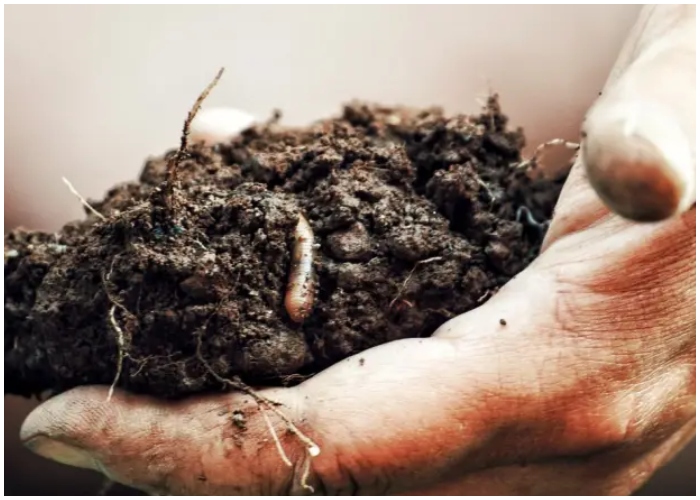Optimizing soil fertility is a cornerstone of successful organic farming. Without the use of synthetic fertilizers, organic farmers must rely on natural methods and materials to enhance the nutrient content and structure of their soil. Here’s a comprehensive guide on how to enrich your soil organically, based on expert advice from Klaas and Mary-Howell Martens.

Fundamental Soil Management Practices
Before delving into specific amendments, it’s crucial to ensure that your basic agronomic practices are sound. Soil fertility adjustments won’t compensate for inadequate crop rotations, poor variety selection, insufficient weed control, or improper tillage. These fundamental practices lay the groundwork for a healthy, productive soil environment.
Organic Amendments and Practices
- Manure: Animal manure is a traditional and effective fertilizer that adds significant amounts of nitrogen (N), phosphorus (P), and potassium (K) to the soil. The nutrient availability from manure depends on the animal source, how it’s processed, and when it’s applied. Composted manure is preferred under organic standards, reducing the risk of pathogen transmission and nutrient runoff.
- Compost: Properly composted organic matter can be applied to fields at any time, improving soil structure, nutrient content, and microbial activity. Ensure your compost meets National Organic Program (NOP) standards, requiring a specific C:N ratio and temperature maintenance.
- Compost Tea: While beneficial for delivering soluble nutrients and improving soil health, compost tea must be prepared from compliant compost and used without additives to avoid contamination with harmful pathogens.
Nitrogen Sources
- Alfalfa Meal: Rich in nitrogen, alfalfa meal is beneficial for high-value crops due to its content of growth-promoting factors. However, its cost may be prohibitive for larger field applications.
- Soybean Meal: With a balanced nutrient profile, soybean meal can provide substantial nitrogen but is typically more expensive and should be sourced carefully to avoid genetically modified organisms (GMOs).
- Blood Meal and Feather Meal: These animal byproducts are high in nitrogen. Blood meal should be used cautiously as it can burn plants and attract pests. Feather meal releases nitrogen slowly, providing a steady nutrient supply.
- Fish Products: Fish meal and emulsion are excellent nitrogen sources, though organic versions should not contain synthetic preservatives or excessively high phosphorus levels.
Phosphate Sources
- Rock Phosphates: Depending on their origin, rock phosphates can provide slow-release phosphorus. Soft rock phosphate is generally more available to plants than hard rock phosphate.
- Bone Meal: A fast-acting phosphate source, bone meal is also rich in calcium but should be used where an immediate phosphate boost is needed.
Potassium Sources
- Greensand: Providing potassium in a slow-release form, greensand is ideal for long-term fertility plans, especially in high-value horticultural operations.
- Wood Ashes: Wood ashes can supply potassium quickly but should be used sparingly to avoid altering soil pH excessively.
- Potassium Sulfate: This mined mineral provides readily available potassium, suitable for situations where a quick potassium boost is required. Ensure the source is natural and not chemically treated.

Calcium and Magnesium Sources
- Gypsum (Calcium Sulfate): Used to add calcium without altering pH, gypsum is ideal for soils that do not require additional magnesium.
- Dolomitic Lime: Provides both calcium and magnesium, useful for balancing soils deficient in these critical nutrients.
Micronutrient Sources
- Micronutrient-rich Rock Dusts: Basalt and other rock dusts can supply a broad spectrum of trace minerals, enhancing soil vitality and plant health.
Enhancing Biological Activity and Soil Health
- Cover Crops: Growing legumes and other cover crops can naturally increase soil nitrogen through nitrogen fixation while improving soil structure and organic matter content.
- Mulching: Organic mulches not only suppress weeds but also add organic matter to the soil as they decompose, enhancing fertility and moisture retention.
- Crop Rotation: Rotating crops helps prevent soil-borne diseases, reduces pest buildup, and can improve soil fertility and structure when including nitrogen-fixing legumes.
- Reduced Tillage: Minimizing tillage helps preserve soil structure, reduce erosion, and maintain organic matter levels, which is crucial for maintaining soil fertility.
- Biological Inoculants: Applying microbial inoculants can enhance nutrient availability and uptake, improving overall plant health and soil fertility.
By integrating these practices and materials into your farming operations, you can sustainably manage soil fertility, ensuring productive crops and healthy ecosystems. These strategies not only comply with organic standards but also foster a holistic approach to agriculture that benefits the soil, plants, and the environment.